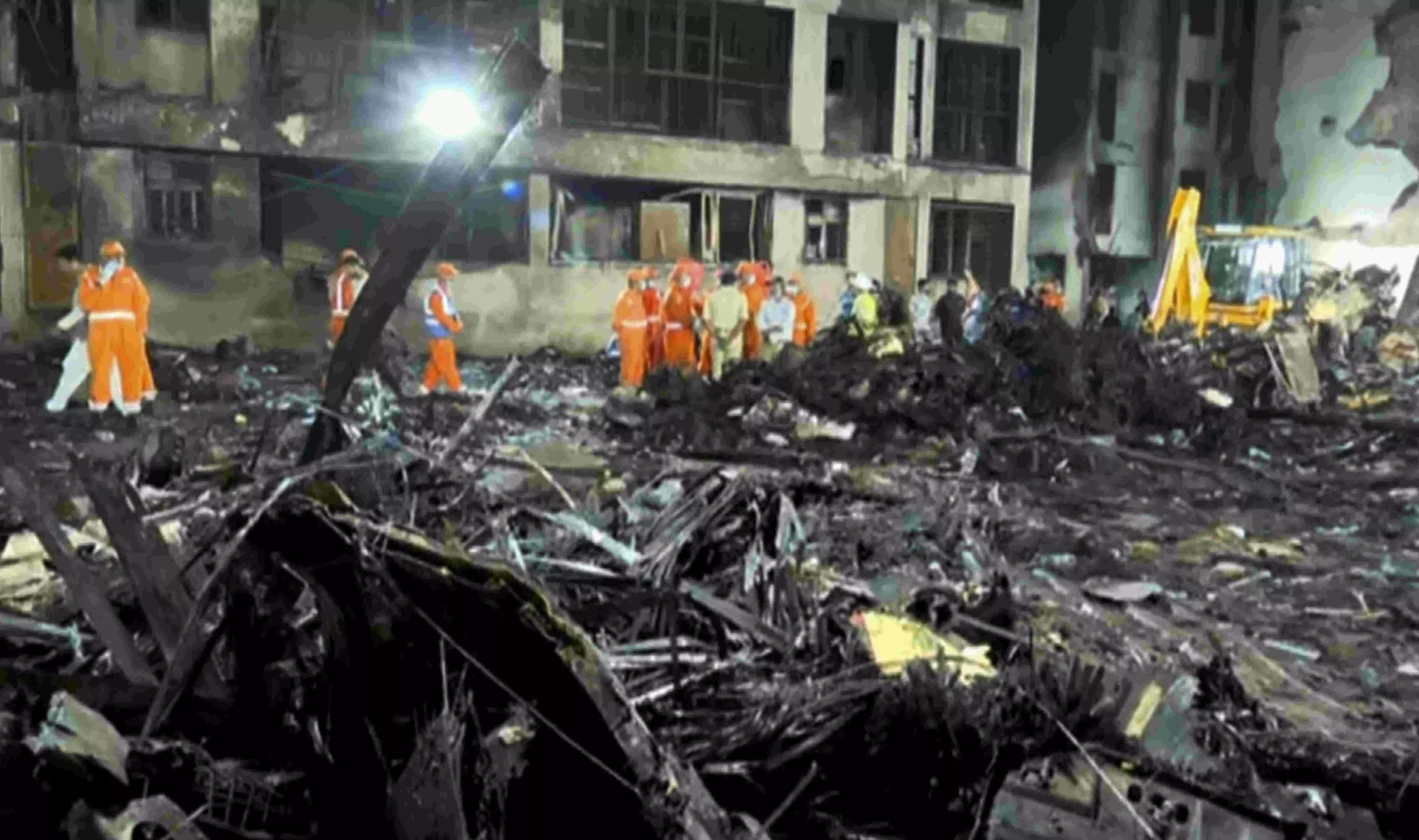30 seconds of Devastation

Death. Despair. Devastation. The crash of the Air India Boeing 787-8 Dreamliner shortly after takeoff from Ahmedabad has once again cast a harsh spotlight on the aircraft’s troubled safety record, raising serious questions about the reliability of a plane once hailed as a technological marvel. The ill-fated flight AI 171, bound for London’s Gatwick Airport, was carrying 242 people, including 12 crew members, when tragedy struck. While the full details and causes of this accident are still under investigation, the incident cannot be viewed in isolation from the aircraft’s history of technical problems and safety concerns, which have persisted since the Dreamliner’s introduction. The Boeing 787-8 Dreamliner was designed as a leap forward in commercial aviation—featuring innovative materials, advanced aerodynamics, and fuel-efficient engines aimed at revolutionising long-haul travel. It was meant to combine passenger comfort with operational efficiency, promising airlines significant savings and travellers a smoother, more pleasant flight experience. However, beneath this glossy image lurks a series of troubling incidents that have undermined confidence in the aircraft’s safety. The Dreamliner’s notoriety began in earnest in 2013 when a series of lithium-ion battery fires prompted aviation authorities worldwide to ground the entire fleet. These battery fires—one on a Japan Airlines plane parked at Boston Logan Airport and another during a flight over Japan—exposed a critical design flaw that threatened passenger safety. The U.S. Federal Aviation Administration (FAA) responded by suspending all Dreamliner operations until Boeing could redesign and certify a safer battery system. This grounding was an unprecedented move for a new aircraft and marked a serious setback for Boeing’s flagship model.
Safety concerns surrounding the Dreamliner resurfaced in 2024 when a whistleblower from within Boeing, engineer Sam Salehpour, testified before the U.S. Senate about alleged structural issues in the fuselage. Salehpour raised alarms over “small gaps” and assembly faults that could accelerate wear and potentially lead to structural failure. Such revelations called into question the thoroughness of Boeing’s quality control and the FAA’s oversight, forcing regulators to initiate investigations that remain unresolved. The very notion that a modern aircraft might suffer from systemic manufacturing defects is deeply troubling and demands rigorous scrutiny. More recently, the Dreamliner’s reputation has been further tarnished by several technical malfunctions reported by pilots and passengers. In March this year, a Boeing 787-9 operated by LATAM Airlines abruptly lost altitude mid-flight, injuring 50 passengers due to a cockpit seat malfunction. Other pilots have reported problems ranging from engine icing to fuel leaks, generator failures, and electrical system faults—issues that are alarming for an aircraft touted as one of the safest in the sky. While some of these incidents were managed without catastrophe, they highlight persistent vulnerabilities that require urgent attention. The Air India Dreamliner involved in Thursday’s crash first took to the skies in 2013 and was delivered to the airline in January 2014. Over a decade in service, the aircraft’s maintenance and operational history will be thoroughly examined by investigators from Air India and the Directorate General of Civil Aviation (DGCA). Their findings will be crucial not only to understand what led to this tragic event but also to restore faith in the safety of the Dreamliner fleet, both in India and globally. The Indian government’s commitment to supporting rescue and relief efforts is commendable, but it must also ensure that this tragic accident prompts a broader reckoning with aviation safety standards. The loss of lives, whether confirmed or yet to be established, is a grim reminder of the stakes involved when technical failures occur at 30,000 feet. Aviation authorities, airline operators, and manufacturers must prioritise transparency and swift corrective action to prevent future disasters. This incident also raises important questions about regulatory oversight in India. The DGCA has a responsibility not only to enforce compliance with safety protocols but also to conduct proactive audits and inspections that can identify and address risks before they culminate in accidents. The DGCA must coordinate closely with global agencies like the FAA and the European Union Aviation Safety Agency (EASA) to share intelligence and best practices. Aviation safety is a global concern, and lapses in one country can have ripple effects worldwide.
For Boeing, the crash underscores the urgent need to rebuild its credibility after a series of setbacks that have severely damaged its reputation. The company must be transparent about the investigation findings and cooperate fully with regulatory authorities. More importantly, Boeing should invest in rigorous quality assurance and continuous monitoring of its aircraft in operation, learning from past mistakes and preventing defects from being overlooked in pursuit of commercial deadlines. Passengers also deserve clear communication and reassurance that airlines and manufacturers are prioritising their safety above all else. The Dreamliner was marketed as a symbol of modern aviation excellence, but it can no longer rest on past laurels. Robust safety must be a continuous, evolving commitment. Until that is ensured, incidents like the recent crash will continue to shake public confidence in this aircraft model. While aviation will always carry inherent risks, these risks can and must be minimised through rigorous engineering, vigilant regulation, and an uncompromising safety culture. The Air India Dreamliner crash is a tragic wake-up call that demands no less. As the investigation unfolds, the hope is that the lessons learned will lead to safer skies for all.



